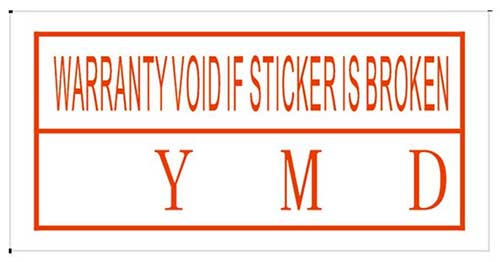TIME FOR UPGRADE?
Welcome to a guide on the different ways to check your computer age. So you are wondering how old your computer is, and if it is time to upgrade? Or maybe you have gotten an older computer and want to check its age. Either way, I have some bad news to break – There is no reliable way to determine the age of a computer.
You see, computers usually have various components that are manufactured separately, then assembled together later. The age of one component can be older than another, not to mention that component upgrades and replacements can also be done after a computer has been fully assembled. But not to be disappointed, there are still ways to get an estimate of the age of a computer:
- By checking the installation date of the Operating System.
- Checking the build date in the BIOS.
- Checking the date on the warranty sticker or invoice.
- By inspecting each of the hardware.
But just how do we do the checks exactly? Read on to find out!
TABLE OF CONTENTS
 Method 1 Method 1OS Install Date |
 Method 2 Method 2Check BIOS |
 Method 3 Method 3Stickers & Serials |
 Method 4 Method 4Hardware Inspection |
 Extra ExtraUseful Bits |
 Closing ClosingWhat’s Next? |
OPERATING SYSTEM INSTALL DATE

This first method is probably one of the easier ones, and that is to get the date when the operating system (Windows or Mac) is installed. But please take note that if the operating system has been re-installed on the computer before, then this might not be an accurate method.
FOR WINDOWS

- Press “Windows-R” to bring up the run dialog box.
- Type “cmd” to open the command prompt.
- Then type “systeminfo” and press “enter” in the command prompt.
- Scroll up when the system is done, and look for the “Original Install Date”. This should give you an idea to when the computer is first set up.
FOR MAC

Digging up the initial install date for Macs are a little more troublesome – I will recommend checking the serial number below instead. But if you want to do some digging, here’s how:
- Press the Apple button, about this Mac, system report.
- At the left-hand menu, choose “logs” under the “software” section.
- Double click on the installer.log.
- This is an interesting log file containing all your installation and updates history… Scroll all the way back and the first entry should give you a pretty good estimation.
CHECK BIOS

For those of you who are new, there is a screen usually with the manufacturer’s logo when you first power up the computer. That is called the BIOS (basic input/output system) and where you can tweak the hardware settings.
We are not going to do that, but instead, use the BIOS to check for potential dates. Note for the Mac users – Sadly, the Macs do not have a BIOS… But there are still alternatives that you can check out.
ACCESSING THE BIOS

- To access the BIOS, you need to fully restart your computer first.
- It is kind of hard to catch, but there will usually be a couple of seconds for you to press either delete or F2 to enter the BIOS. Depending on the manufacturer, it can even be F5 or F8.
- Once in the BIOS, poke around for more information. There will usually be a build date for the BIOS firmware, and this is where you can estimate the age of your computer from.
STICKERS & SERIALS

If you can’t get anything out of the software, then it is time for some physical inspections. There will normally be a piece of “void if broken” warranty sticker on the back of the computer. You should be able to estimate the age of the computer from this warranty date.

ALTERNATIVE – THE RECEIPT
If there are no warranty stickers on the computer, then check your receipt if you still have it… It may not be the most accurate but can still give you a pretty good guess.
GAME OF SERIAL NUMBERS

If your computer is from a reputable manufacturer, there should be a serial number or service tag somewhere. I will not go into how to find that serial number, as it is different for every manufacturer – You need to more research on your own.
As for the Mac users, just press the Apple button, “About This Mac”, and the serial number is right on the dialog box. Once you have that serial number, you can access the company’s support website and inquire about the warranty status. Here are the websites for few of the reputable manufacturers:
The key point here is – The manufacturers will usually give you the date of purchase and the warranty period. From there, you can have a pretty good guess on the age of that computer… and it is a huge plus if still covered under warranty.
HARDWARE INSPECTION

Finally, if you totally cannot dig any details on the software side, no warranty stickers, no manufactured date, and no receipt… The last straw is to do some CSI work.
WINDOWS – IDENTIFY THE HARDWARE

Things get a little hairy if it is a custom-built computer – All the components could have a different manufacture date, and you will have to individually identify them yourself.
- Hit the start buttons, search and launch “system information”.
- Under the summary section, you should be able to get some information on the CPU and motherboard.
- Under the components, display section, you should be able to get information on the graphics card.,
- Now do some search engine research… Search for stuff like “Intel i5-6600K release date”, or “NVIDIA GTX 1050 Ti release date”. That will give you a pretty good estimate to the age of the components.
MAC – ABOUT THIS MAC

Identifying Macs are a lot easier. If that serial number above did not give you enough information, you can go into “System Report” and see more about your Mac. Doing some online research should help you to figure out which year your Mac is manufactured.
USEFUL BITS

That’s all for this guide, and here is a small section on some extras and links that may be useful to you.
LINKS & REFERENCES
- Find Operating System Install Date – StackOverflow
- How to find out when macOS was last reinstalled – iDownloadBlog
- How to Find the Manufacture Date of Your PC – Synonym
WHAT’S NEXT?

Thank you for reading, and we have come to the end of this guide. I hope that this has helped you to figure out the age of your computer, and if you have anything to share with this guide, please feel free to comment below. Good luck and happy computing. May the cyber force be with you.
